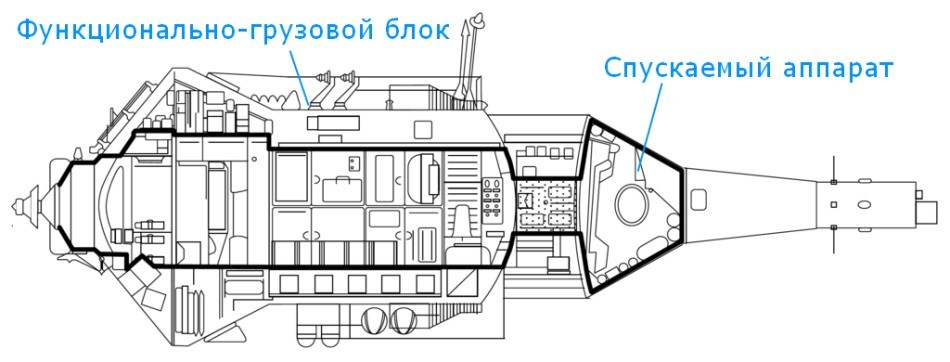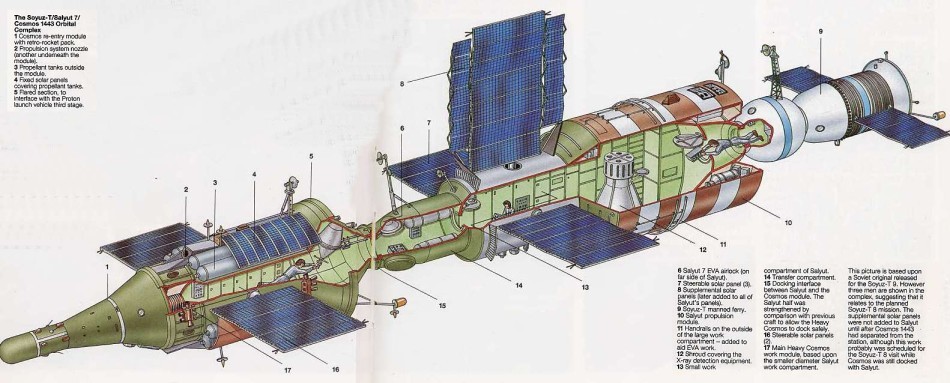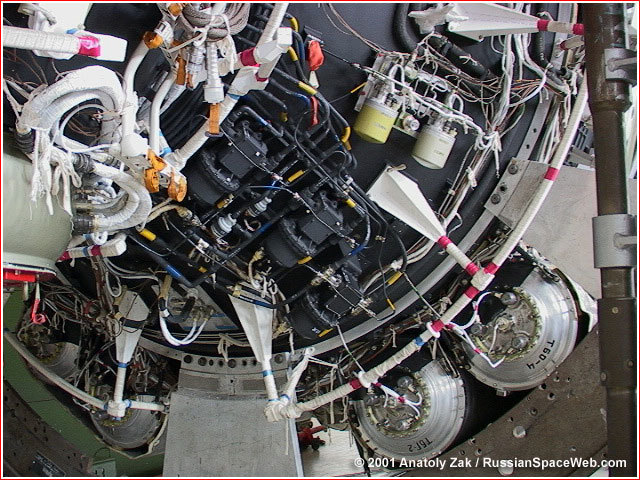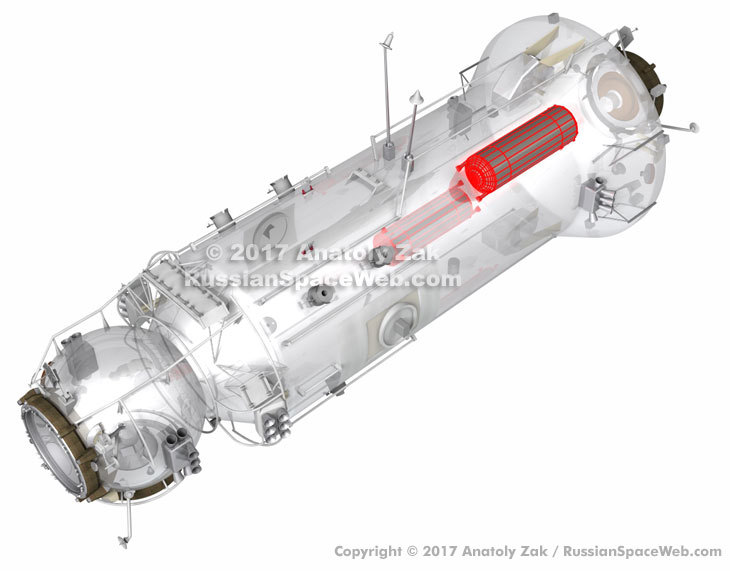Bayans of great ancestors or engineering problems of the module "Science"
If you have followed the misadventures of the “Science” module, which for many years have not been able to launch to the ISS, and, according to the latest news, they find there are all new pollution, then this story could disturb you. Indeed, you might think something like: “Well, rinse these tanks and pipelines already, or replace them and start them in the end!” At the household level, this is logical. But if you look at it, the history of "Science" turns into a parable, that once achieved a level of technology can be easily forgotten and lost.

The module "Science", photo RSC "Energy"
In 2013, the assembled module "Science" was started to be prepared for launch, but he failed acceptance testing at RSC Energia - metal chips were found in the pipelines. The module in 2015 was returned back to the Center. Khrunichev, pipelines were replaced, but in the spring of 2017 pollution was found already in the tanks. Plans to launch the module in 2018 are now impossible to fulfill, and in early April there was even news that Science could be canceled altogether. At the end of April, two weeks will expire, taken to assess the state of the module’s systems, and a new decision may be announced.
Why does the removal of pollution take so much time, and why are tanks simply not replaced? In contrast to serial household units, this is not so easy to do. But in order to understand this, one has to plunge into the history of the creation of "Science".
')
In the best traditions of epic narratives, our story begins in 1969. OKB-52 Chelomey, the creator of the Proton launch vehicle, developed the Almaz military orbital stations. Their main task was to photograph the Earth in various spectra, and, therefore, a large amount of film that had to be returned to Earth. The original project of 1966 wanted to use a modification of the Soyuz spacecraft, but even so far, Soyuz has very small possibilities for returning cargo. The heavy Proton could lift twenty tons into orbit, three times more than the Soyuz launch vehicle, which was taking the Soyuz spacecraft, so in 1969 it was decided to make a new manned spacecraft. Thus was born the Transport Supply Ship (TKS).

TCS cut, NASA / David SF Portree drawing
The large payload capacity of the Proton made it possible to create a heavy ship of two parts - a return vehicle (VA) and a functional cargo block (FGB). A curious detail is that the returned apparatus was planned to be used many times, and during the tests, two VA flew twice into space.

TKS on Proton launch vehicle, spire on the left - rescue system
Not a single TKS was launched with the crew, mainly because the Proton launch vehicle toxic fuel required much more serious security measures in preparation for the launch and created big problems in the event of an accident during the first seconds of flight — the returned vehicle could not fly far and on the ground could be covered with vapors of unburned fuel. But as cargo ships, the TKS flew repeatedly. And on the basis of the already finished FGB design, they began to make modules of orbital stations. TKS docked with the Salyut-7 station and worked with its module.

TKS, "Salyut-7" and the docked "Union", in a larger size
The FGB became modules for the Mir station and served as tugboats, which led and docked other modules.

1 - TCS, 2 - tow on the basis of TCS and the Kvant module, 3 - the Kvant-2 module, drawing by Mikhail Shmitov, Technics-Youth 2004 No. 9
At the beginning of the 90s, FGB left two. From one made FGB "Dawn" - the first module of the ISS. The latter was first reserved in case of the “Dawn” accident, and as a result, the “Science” module was made of it.

TCS and FGB "Zarya", the scheme from the forum Air Base
In the original design FGB six long and narrow tanks 77KM-6127-0. In two gas is stored pressurized under high pressure, four more store fuel and oxidizer with a total mass of 2432 kg. The small diameter of the tanks made it possible to place the radiators of the heat exchange system above them and not to go beyond the maximum diameter of 4.1 m.

View of the butt of the tanks, photo by Anatoly Zak / russianspaceweb.com

Bucky under the radiators, photo by Anatoly Zak / russianspaceweb.com
Structurally, these are not just tanks, but complex units with a partition in the form of a bellows (accordion) between the fuel component and the pressurized gas. The bellows, converging and diverging like accordion furs, allows the diaphragm to move inside the tank, which makes it possible to repeatedly refuel it from transport ships already in orbit.

Tank diagram, photo from the presentation of prof. V.A. Solovyov
The tanks were produced in the 80s, nothing was left of the equipment on which they were made, production chains were destroyed after the collapse of the USSR, and new ones would have to be made from scratch. When pollution got into them - it is not known, it could well have been recorded as far back as the 1990s, and people who made a mistake or negligence no longer work, and someone is already possible and not alive. Simply rinse the tanks will not work - because of the complex shape of the pollution will be removed only in parts. What to do?
When the FGB prepared for the role of a backup "Dawn", it installed other, shortened tanks. "Zarya" did not maneuver actively for docking, it was caught by the Space Shuttle, so the amount of fuel could be reduced.

Version with shortened tanks, model Anatoly Zak / russianspaceweb.com
Then the shortened tanks were removed, and one of the options after finding a problem would be to put them again. This option was dropped, because in the shortened tanks they also found pollution. Indirectly, this confirms the version that he was brought there back in the 90s, but this is no easier for us. Another option was considered with the simultaneous use of long and short tanks, but he eventually disappeared.
A new research and energy module of the ISS is being developed in Russia, and it also has fuel tanks. And what if you put them?

Option with tanks from NEM, model Anatoly Zak / russianspaceweb.com
But, alas, new tanks of larger diameter and do not fit under the heat exchange system radiators. And if you raise the radiators higher, then the diameter of the module will be greater than 4.1 m, and you will have to make a new fairing for the Proton launch vehicle, because the existing module does not fit in width.
Well, we still have the Progress transport ships, and you can try to get tanks from there. Tanks are mass-produced, they are small, but you can take a lot of them, this is not a problem.

Version with tanks from Progress, model Anatoly Zak / russianspaceweb.com
But this option didn’t fit either - Progress tanks are larger in diameter, and they will require solutions like radiators and fairing problems of the NEM tanks. Plus, they were not designed for multiple refueling, and it may be difficult to refuel them in orbit.
As a result, according to Anatoly Zak, they decided to open the original tanks along the longitudinal axis and clean them carefully. This operation should give access to complex bellows bellows for cleaning, and does not require new unique parts - you can cut and weld tanks on existing equipment.
The sad story of "Science", in my opinion, shows the facets of technological progress, which are rarely thought about. Unlike a computer game, where the technology studied is not going anywhere, in reality it is very easy after reaching a certain level to roll back and lose the ability to make structures that were mass-produced decades ago. And the story of "Science" begins to resemble the lost technology of the launch vehicles "Energy" or "Saturn-V"
Related stories on the "invisible difficulty" tag

The module "Science", photo RSC "Energy"
Facts and Chronology
In 2013, the assembled module "Science" was started to be prepared for launch, but he failed acceptance testing at RSC Energia - metal chips were found in the pipelines. The module in 2015 was returned back to the Center. Khrunichev, pipelines were replaced, but in the spring of 2017 pollution was found already in the tanks. Plans to launch the module in 2018 are now impossible to fulfill, and in early April there was even news that Science could be canceled altogether. At the end of April, two weeks will expire, taken to assess the state of the module’s systems, and a new decision may be announced.
Why does the removal of pollution take so much time, and why are tanks simply not replaced? In contrast to serial household units, this is not so easy to do. But in order to understand this, one has to plunge into the history of the creation of "Science".
')
How the truck stations became
In the best traditions of epic narratives, our story begins in 1969. OKB-52 Chelomey, the creator of the Proton launch vehicle, developed the Almaz military orbital stations. Their main task was to photograph the Earth in various spectra, and, therefore, a large amount of film that had to be returned to Earth. The original project of 1966 wanted to use a modification of the Soyuz spacecraft, but even so far, Soyuz has very small possibilities for returning cargo. The heavy Proton could lift twenty tons into orbit, three times more than the Soyuz launch vehicle, which was taking the Soyuz spacecraft, so in 1969 it was decided to make a new manned spacecraft. Thus was born the Transport Supply Ship (TKS).

TCS cut, NASA / David SF Portree drawing
The large payload capacity of the Proton made it possible to create a heavy ship of two parts - a return vehicle (VA) and a functional cargo block (FGB). A curious detail is that the returned apparatus was planned to be used many times, and during the tests, two VA flew twice into space.

TKS on Proton launch vehicle, spire on the left - rescue system
Not a single TKS was launched with the crew, mainly because the Proton launch vehicle toxic fuel required much more serious security measures in preparation for the launch and created big problems in the event of an accident during the first seconds of flight — the returned vehicle could not fly far and on the ground could be covered with vapors of unburned fuel. But as cargo ships, the TKS flew repeatedly. And on the basis of the already finished FGB design, they began to make modules of orbital stations. TKS docked with the Salyut-7 station and worked with its module.

TKS, "Salyut-7" and the docked "Union", in a larger size
The FGB became modules for the Mir station and served as tugboats, which led and docked other modules.

1 - TCS, 2 - tow on the basis of TCS and the Kvant module, 3 - the Kvant-2 module, drawing by Mikhail Shmitov, Technics-Youth 2004 No. 9
At the beginning of the 90s, FGB left two. From one made FGB "Dawn" - the first module of the ISS. The latter was first reserved in case of the “Dawn” accident, and as a result, the “Science” module was made of it.

TCS and FGB "Zarya", the scheme from the forum Air Base
Industrial archeology of bayans
In the original design FGB six long and narrow tanks 77KM-6127-0. In two gas is stored pressurized under high pressure, four more store fuel and oxidizer with a total mass of 2432 kg. The small diameter of the tanks made it possible to place the radiators of the heat exchange system above them and not to go beyond the maximum diameter of 4.1 m.

View of the butt of the tanks, photo by Anatoly Zak / russianspaceweb.com

Bucky under the radiators, photo by Anatoly Zak / russianspaceweb.com
Structurally, these are not just tanks, but complex units with a partition in the form of a bellows (accordion) between the fuel component and the pressurized gas. The bellows, converging and diverging like accordion furs, allows the diaphragm to move inside the tank, which makes it possible to repeatedly refuel it from transport ships already in orbit.

Tank diagram, photo from the presentation of prof. V.A. Solovyov
The tanks were produced in the 80s, nothing was left of the equipment on which they were made, production chains were destroyed after the collapse of the USSR, and new ones would have to be made from scratch. When pollution got into them - it is not known, it could well have been recorded as far back as the 1990s, and people who made a mistake or negligence no longer work, and someone is already possible and not alive. Simply rinse the tanks will not work - because of the complex shape of the pollution will be removed only in parts. What to do?
When the FGB prepared for the role of a backup "Dawn", it installed other, shortened tanks. "Zarya" did not maneuver actively for docking, it was caught by the Space Shuttle, so the amount of fuel could be reduced.

Version with shortened tanks, model Anatoly Zak / russianspaceweb.com
Then the shortened tanks were removed, and one of the options after finding a problem would be to put them again. This option was dropped, because in the shortened tanks they also found pollution. Indirectly, this confirms the version that he was brought there back in the 90s, but this is no easier for us. Another option was considered with the simultaneous use of long and short tanks, but he eventually disappeared.
A new research and energy module of the ISS is being developed in Russia, and it also has fuel tanks. And what if you put them?

Option with tanks from NEM, model Anatoly Zak / russianspaceweb.com
But, alas, new tanks of larger diameter and do not fit under the heat exchange system radiators. And if you raise the radiators higher, then the diameter of the module will be greater than 4.1 m, and you will have to make a new fairing for the Proton launch vehicle, because the existing module does not fit in width.
Well, we still have the Progress transport ships, and you can try to get tanks from there. Tanks are mass-produced, they are small, but you can take a lot of them, this is not a problem.

Version with tanks from Progress, model Anatoly Zak / russianspaceweb.com
But this option didn’t fit either - Progress tanks are larger in diameter, and they will require solutions like radiators and fairing problems of the NEM tanks. Plus, they were not designed for multiple refueling, and it may be difficult to refuel them in orbit.
As a result, according to Anatoly Zak, they decided to open the original tanks along the longitudinal axis and clean them carefully. This operation should give access to complex bellows bellows for cleaning, and does not require new unique parts - you can cut and weld tanks on existing equipment.
Total
The sad story of "Science", in my opinion, shows the facets of technological progress, which are rarely thought about. Unlike a computer game, where the technology studied is not going anywhere, in reality it is very easy after reaching a certain level to roll back and lose the ability to make structures that were mass-produced decades ago. And the story of "Science" begins to resemble the lost technology of the launch vehicles "Energy" or "Saturn-V"
Related stories on the "invisible difficulty" tag
Source: https://habr.com/ru/post/373393/
All Articles